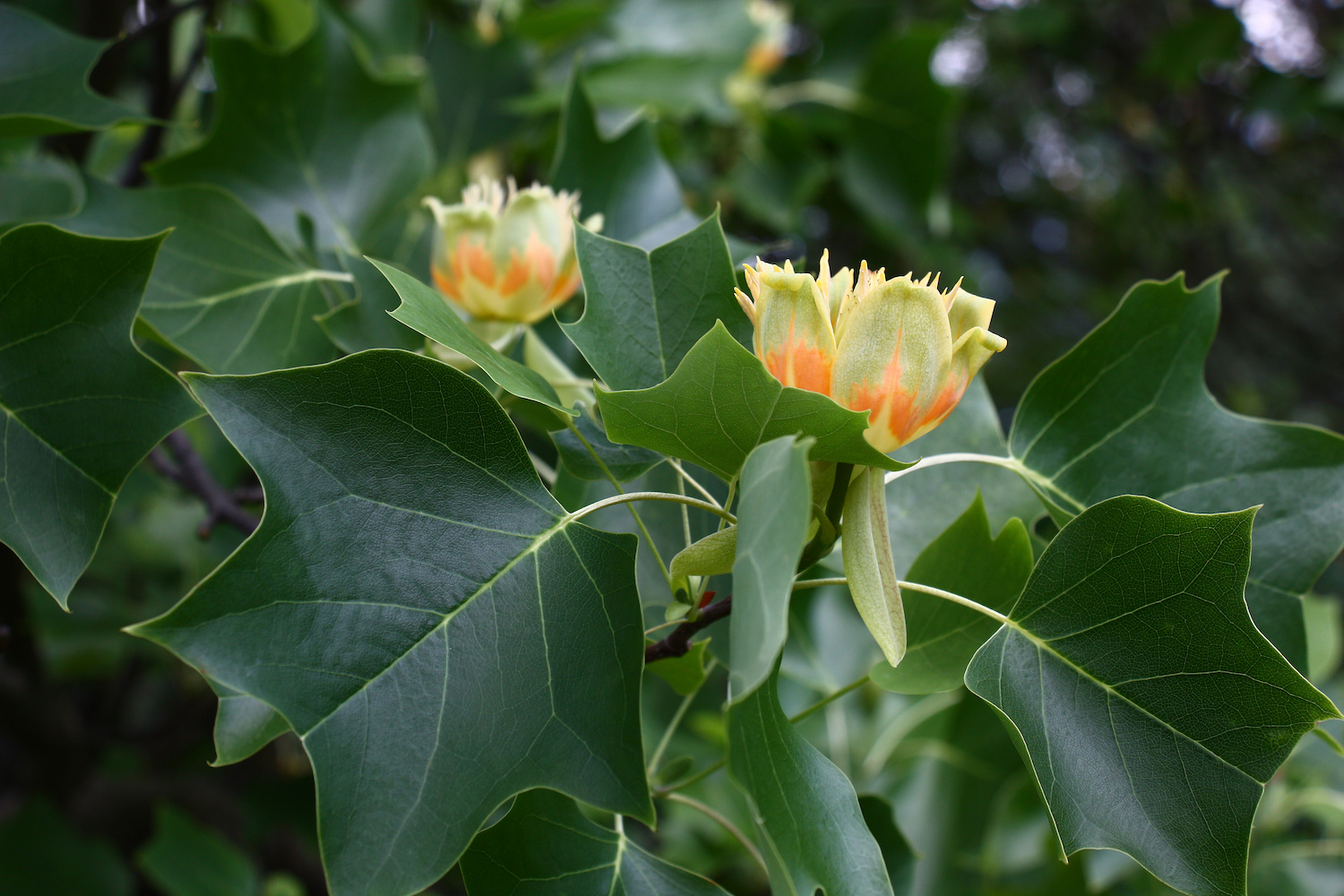
By Catherine Cooper
Spring comes with an abundance of flowering trees: native dogwoods and redbuds; ornamental crabapples, cherries and plums. Once this welcome flush of color is over, it seems that trees hand the baton of flowering over to perennials and shrubs, being content to assume a more background role. However, there are some trees that save their flowers for summer, and as such add increased visual interest to the landscape during warmer months.

Kousa dogwood (cornus kousa) is the last of the dogwood trees to bloom, being at its best in May/June. Predominantly offering white flowers consisting of four petal-like bracts surrounding the small true flower, this small to medium sized tree is an easy-care option for smaller spaces. The flowers give way to red fruit in late summer, while the fall foliage is an attractive deep red. Similar to other dogwoods, there are cultivars with pink/red flowers. Look for Satomi New Red and Scarlet Fire.
A couple of native trees also bloom in early summer: sweetbay magnolia (magnolia virginiana) and tulip tree (liriodendron tulipifera).
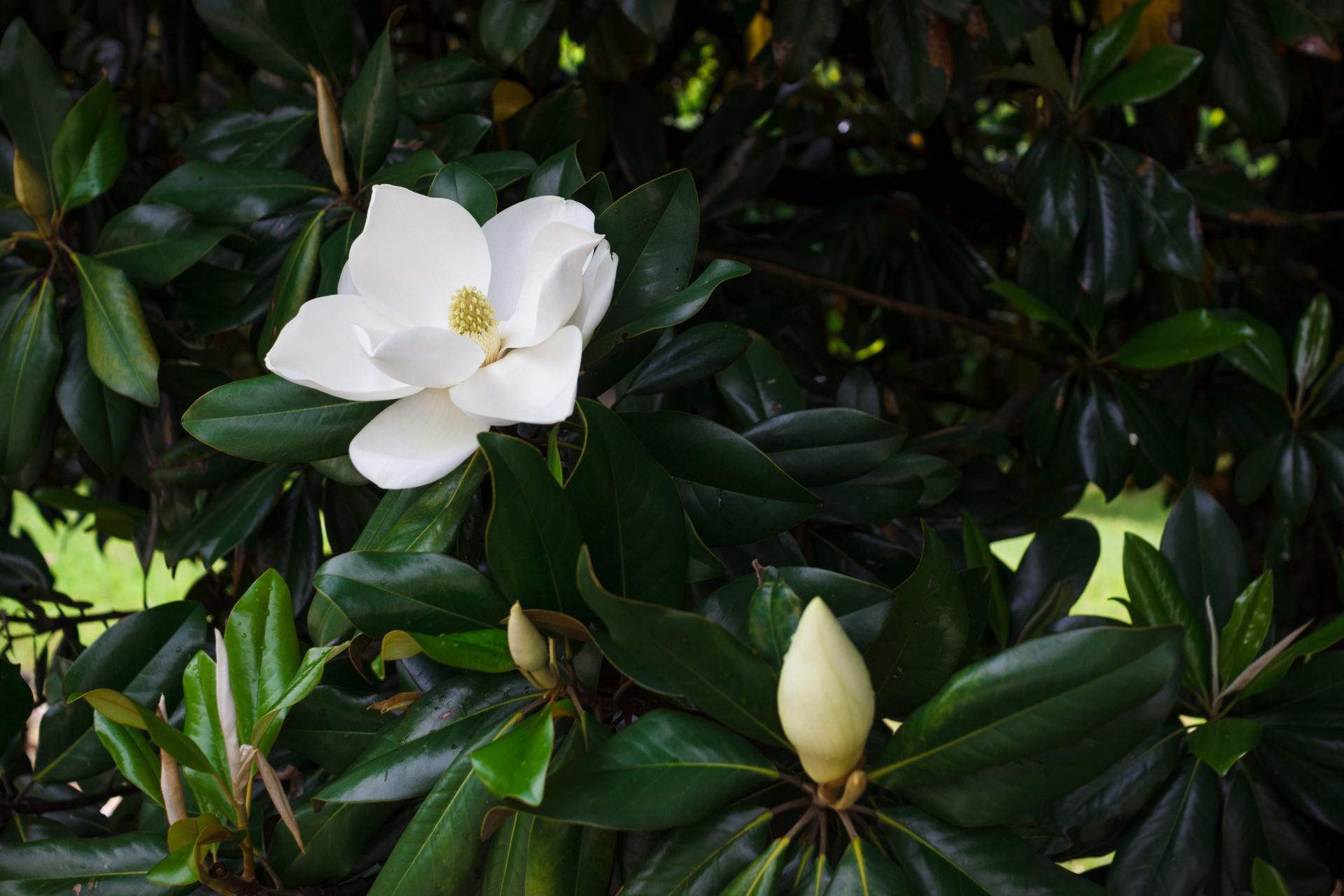
Sweetbay magnolia is native along the eastern states from Massachusetts south to Florida. It too is a medium sized tree, and in the northern part of its range loses its leaves in winter. It produces white, lemony-scented, cup-shaped flowers at least two inches in diameter. These bloom in June, and then intermittently until fall. This tree also produces a red fruit, which is enjoyed by birds and small mammals.

Tulip tree is a substantial tree that can reach up to 100 feet tall. It gets its name from the shape of its flowers, which match true tulips for size and shape. However, it is a flower that is best viewed up close to appreciate its colors of light green, yellow and orange. Cultivars that reach less dramatic sizes include Arnold and Emerald City.
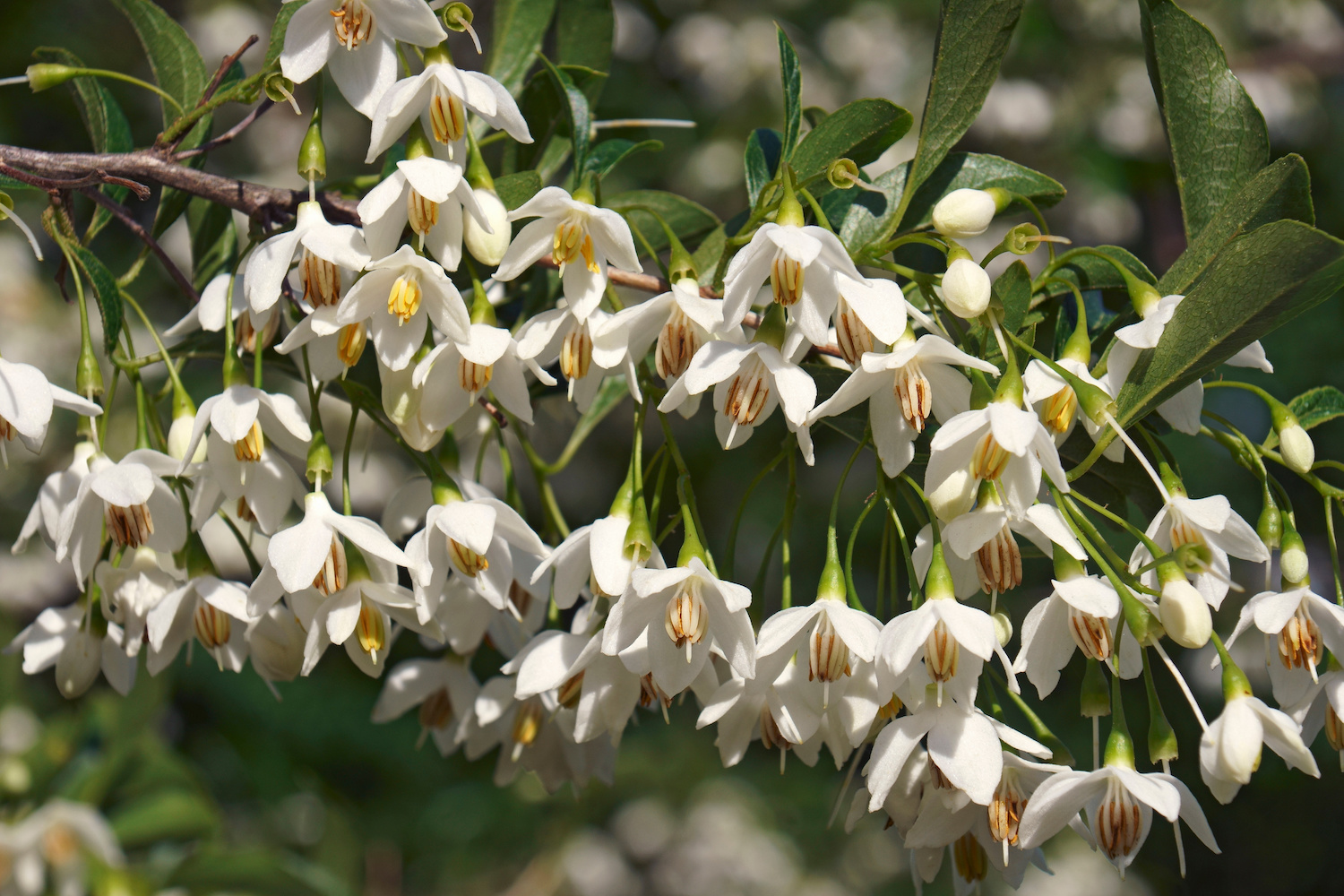
In contrast to the impressive size of tulip tree, Japanese snowbell (styrax japonicus) is a tree with delicate foliage and a light, airy form. Producing clusters of white, bell-shaped flowers about 5/8” long, it graces gardens in June. Look for the variety Snowcone for prolific white bells, and Pink Chimes for palest pink flowers.
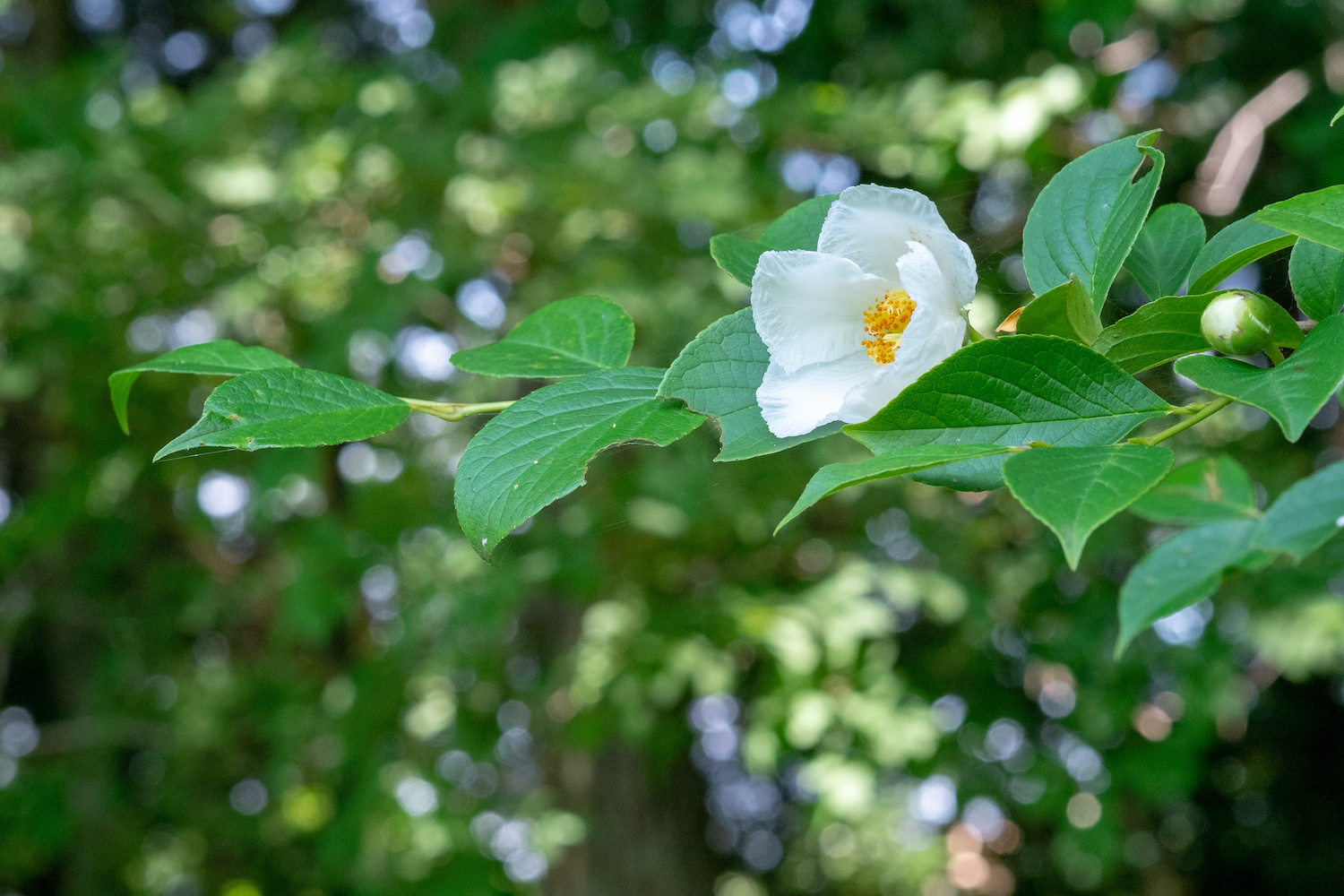
Another tree of Asian origin that saves its flowers for summer is stewartia. Japanese stewartia (stewartia pseudocamellia) is the species most commonly found for sale. This tree deserves to be better known, as it offers not only wonderful white flowers resembling those of the camellia shrub, but also has colorful fall foliage and attractive peeling bark, making it a worthy all-season landscape tree.
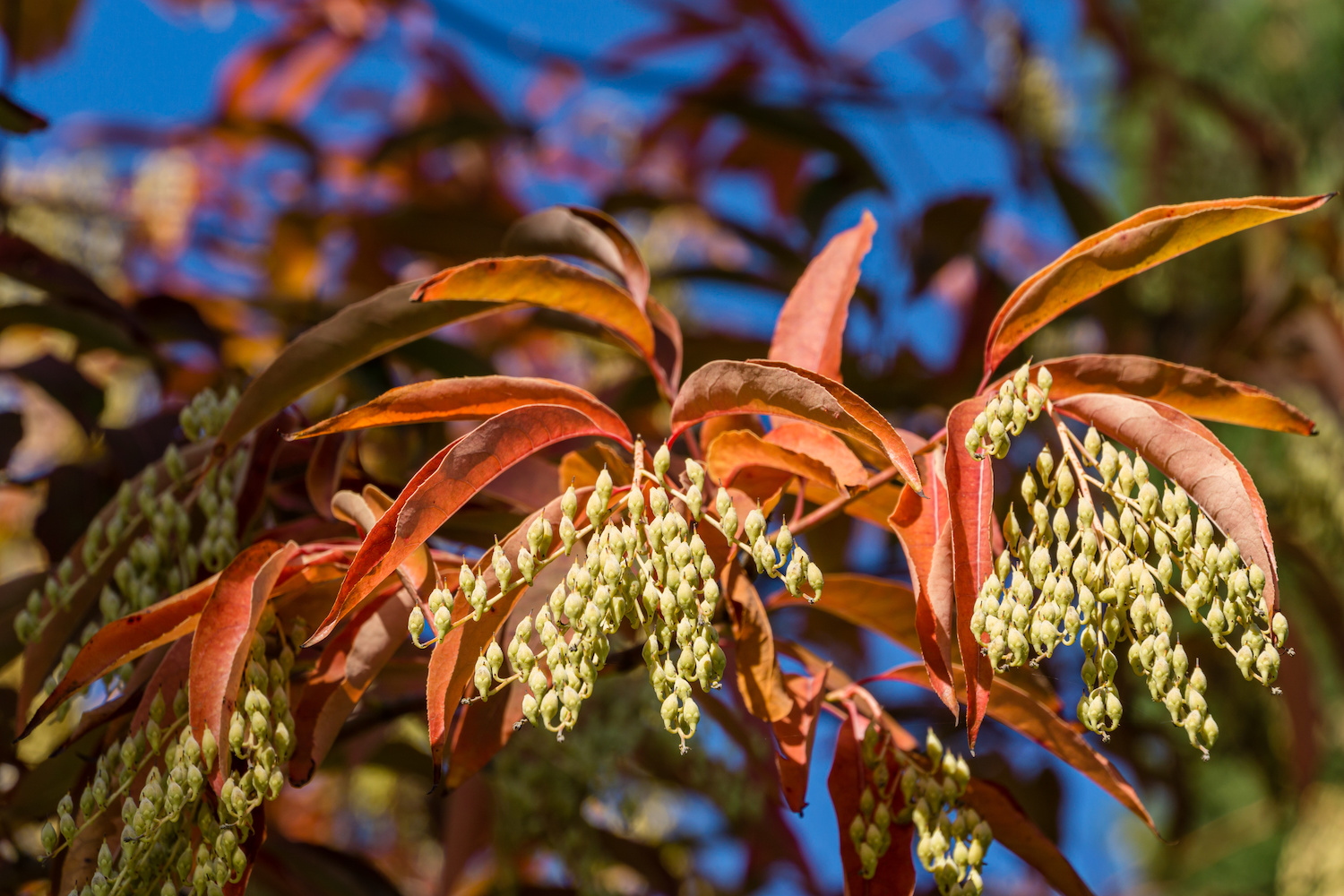
Sourwood tree (oxydendrum arboreum) is a small/medium sized native tree that is generally not well known, and gets its name from its bitter tasting leaves, which have been used medicinally for centuries. However, one of its other names, lily of the valley tree, aptly describe the stems of fragrant white flowers that bloom in June and early July. Honey produced from the flowers is considered a real delicacy. This tree ends the growing season on a crescendo as its foliage turns vibrant shades of red and orange.
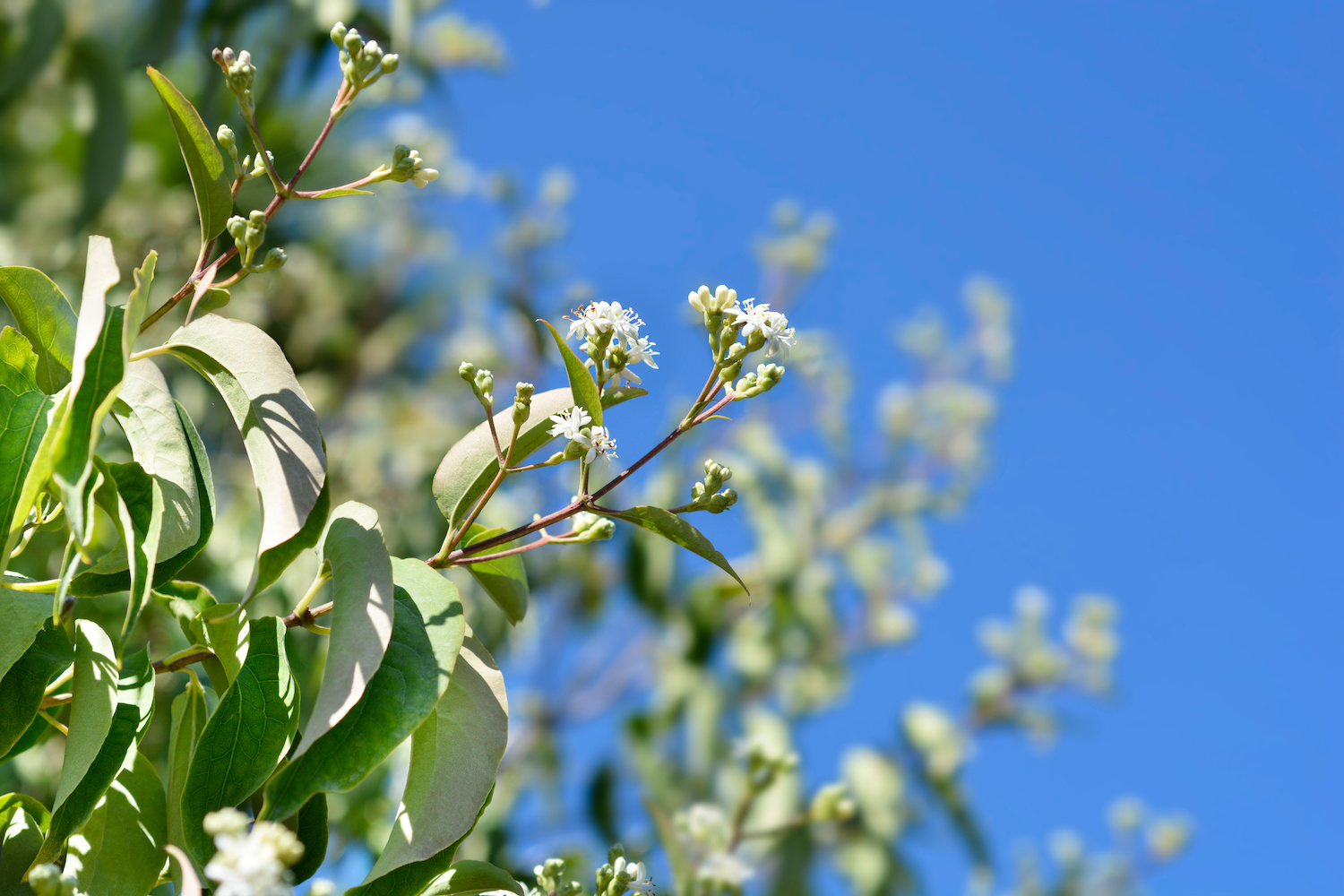
Another small sized tree that comes into its glory in late summer is the seven son flower tree (heptacodium miconioides). So named because the flowers come in small groups of seven, seven son flower tree produces large clusters of fragrant white flowers which are immensely popular with bees. These flowers appear to turn to a rosy red with time, as once the petals fall the remaining sepals of each flower look like a second flush of red flowers. It too offers multi-season interest as it has unusual peeling bark, thus providing visual interest in winter.

And finally, the last tree in this list is another native, Franklin tree, (franklinia alatamaha). Named in honor of Benjamin Franklin and the Altamaha River in Georgia, in whose vicinity it was discovered, it is not commonly found in cultivation, in part due to the fact that it has been extinct in the wild since soon after it was discovered. Fortunately for this tree, while plant hunting might have contributed to making it extinct in the wild, it was considered horticulturally desirable and can still be found to this day. It has large, glossy oval leaves which turn fiery shades in the fall. Blooming in September, this foliage sets off the white, scented, camellia-like flowers, which reach 3” in diameter. Liking moist, acid soil, it doesn’t do well in drought and will appreciate some shelter from cold winter winds.









